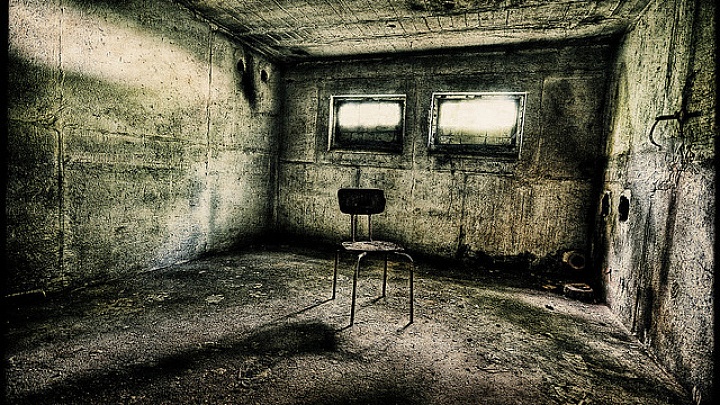Upon hearing that Stalin trained as a priest in his youth before going on to oversee the death of more than 40 million as leader of the Soviet Union, Christopher Hitchens allegedly remarked: “Indeed, was he not among the more promising of the Tbilisi ordinands?” It is precisely this vitriol towards and misunderstanding of religion that Karen Armstrong confronts in her new book, Fields of Blood: Religion and the History of Violence. Surveying several thousand years of history and more than a half dozen religious traditions, she compellingly refutes the claim repeated like a mantra by “American commentators and psychiatrists, London taxi drivers, and Oxford academics” that religion is inherently violent. In contrast, she argues that faith has become a scapegoat to absolve the violent tendencies of our human nature and state building projects. This transference has been facilitated by the “myth of religious violence,” a founding assumption of the modern state system that misconstrues religion as an irrational and bellicose force the state must tame in order to preserve social harmony.
Armstrong’s contribution complements a number of books published over the past two decades that emphasize both the violent and irenic sides of religion. Her analysis is to be commended for the questions it raises, its historical scope, and the attention it gives to the intersection of religion and politics. However, the reader may be ultimately left unclear of and unconvinced by the full logic of her argument. In addition, more details on how to advance the book’s appeal to foster the nonviolent side of religion would make for a more satisfying conclusion.
One Lot for the Lord
Fields of Blood is organized into three major sections, arranged chronologically and, to a certain extent, by religious tradition. Part One focuses largely on spiritual practices in ancient Mesopotamia, India, and China. The concluding chapter to this section also explores the formative years of Judaism as depicted in the Hebrew Bible. Part Two investigates the historical connection between the two other Abrahamic traditions (Christianity, and Islam) and political power, while Part Three is concerned with more contemporary acts of violence claiming religious justification. Here, fundamentalist movements from a variety of faith traditions are explored, but radical Islam is the primary focus.
In each section, Armstrong argues that the link between religion and violence is far more complicated than conventional wisdom suggests for two major reasons. First, until the Protestant Reformation, religion and politics were not understood as distinct phenomena. Rather, religion pervaded all aspects of life, including how we governed and fought. This interweaving can be observed quite explicitly, for instance, in the founding principle of the Byzantine Empire (symphonia), which regarded church and empire as inseparable. “Dissociating them would have seemed like trying to extract gin from a cocktail,” Armstrong quips in a particularly amusing line. Thus, isolating religious motivations from political ones is nearly impossible in many conflicts.
While religion may not be the cause of conflicts, it may shape violence in interesting ways.
Second, religious traditions have been used to justify bellicose and peaceful activities in equal measure. Indeed, Armstrong goes to great lengths to show that reformers emerge time and again in response to members of faith traditions who justify violence in religious terms. One of the more intriguing examples centers on the practice of yoga, which initially referred to the tethering of the draught animals to war chariots before a raid. An Indian reform movement of the eighth century BCE, however, appropriated the term in its efforts to subvert the warrior ethos and advocate for a non-violent, contemplative spiritual discipline that challenged state-sponsored violence.
While some readers may feel bogged down by the extensive details provided by Armstrong, I imagine most will appreciate the breadth and depth of her analysis. Each chapter is chock full of intriguing anecdotes sure to capture the imagination. And, while I of course cannot completely evaluate Armstrong’s handling of every aspect of this impressive chronicle, I do find her treatment of those episodes with which I am most familiar to be careful, balanced, and accurate.
The Other Lot for the Scapegoat
No analysis of such scope, of course, is without its shortcomings. Three, in particular, are worth noting. First, the main argument of the book is never fully developed. Human nature and the state, not religion, are repeatedly claimed to be the primary causes of conflict. To explain the former Armstrong draws on insights from neuroscience in the 1960s that suggest our brains have evolved in such a way as to predispose us towards violence. On the latter, Armstrong contends the “the nature of the state” requires the forcible subjugation of some portion of the population to maintain control and legitimacy. Examples are frequently presented to support these claims, but a direct link is rarely drawn.
Second, in defending religion, Armstrong goes too far. Just because most wars do not stem from religious fervor does not mean conflicts never have religious foundations. For instance, what of Charles V’s decision to attack the Protestant Schmalkadic League during the mid-16th century? In this case, the Holy Roman Emperor arguably hid his religious objectives behind a cloak of political rhetoric. Consideration of such examples would have strengthened, rather than undermined, the book’s central claims by further demonstrating the complex interaction between religion and politics. As it is, Armstrong works hard to convince the reader that violence always starts with the state and religion merely serves as the window dressing to justify military action. One cannot help but remain suspicious since the selected examples fit all too nicely into this narrative.
In addition, while religion may not be the cause of most conflicts, it may shape violence in interesting ways. The discussion of Natalie Zemon-Davis’s seminal article on the St. Bartholomew Day massacres stands out as a perfect opportunity to further explore this line of inquiry. During these 16th century riots, the confessional identity of French citizens strongly influenced the kinds of action undertaken and the targets of violence. Have similar patterns played out in other conflicts? Regrettably, Fields of Blood is largely silent on this question.
Third, Armstrong advocates for, but remains rather vague on how to foster, the irenic side of religion. She concludes her analysis by suggesting that “somehow we have to find a way of doing what religion – at its best – has done for centuries: build a sense of global community, cultivate a sense of reverence and �?equanimity’ for all, and take responsibility for the suffering we see in the world. This is a tall order, and more insight into how to move forward, no matter how modest, would have been appreciated.
Despite its limitations, Fields of Blood raises important questions and offers provocative claims. It goes further than similar books in its historical scope. And, even if not fully convinced by her argument, Armstrong’s persuasive presentation style will challenge the reader to think more carefully about the political, social, and economic roots of violence. As the coverage of the recent terrorist attacks in Paris demonstrates, religion continues to all too easily become a scapegoat in the aftermath of violence. Fields of Blood is, thus, a timely reminder that religion is what we make of it.
Fields of Blood: Religion and the History of Violence
by Karen Armstrong
Knopf, 528 pages, $20.81
Jason Klocek is a doctoral candidate in the Travers Department of Political Science at the University of California, Berkeley. He holds an M.A. in Conflict Resolution from Georgetown University and served with the U.S. Peace Corps in Turkmenistan. His research focuses on religious violence, counterinsurgency, and transitional justice.
[Top Photo: Richard Humphries via Flickr Commons]



Our prosperity requires order. Violence is a means to impose, maintain, and restore order from the winner’s viewpoint. Hopefully, this zero sum approach will become archaic.
Religion is used to inspire and control people by the goals and rules of the god. People want that because it brings order. The king was the liaison to the god. The people controlled the king with the god and the king controlled the people with the god.
The state is just the new religion. Certainly America has been violent in the causes of “righteousness”. Maybe because we are very religious compared to a lot of other countries.
Also, there are genes associated with religiosity and I don’t know if they are associated with violence.
I really don’t know how to react to this review. Does it argue some version of historical determinism–knowledge of past conflicts leads to understand current violence? It’s an interesting review, but I wish Mr. Kolcek had addressed contemporary relevance of historical religious extremism, because we seem to be entering a new era, vis-à-vis ISIS. I guess I’ll have to read the book to open that door.